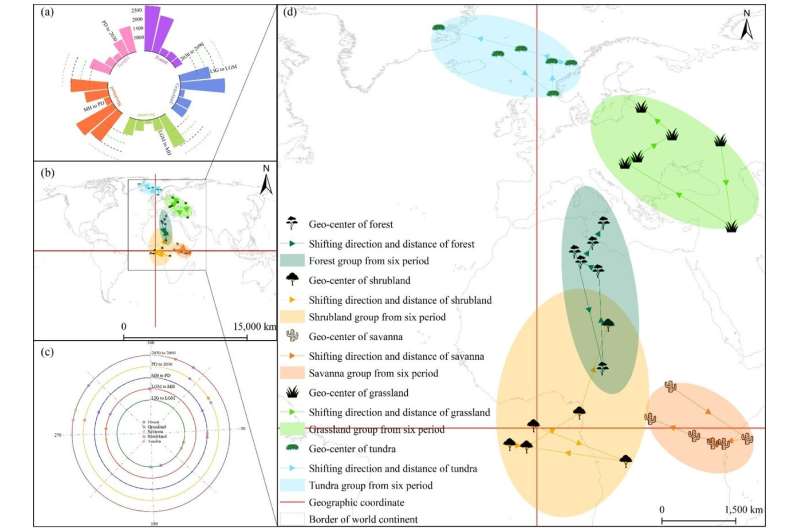This article has been reviewed according to Science X's editorial process and policies. Editors have highlighted the following attributes while ensuring the content's credibility:
fact-checked
proofread
Can savanna emerge in the cold high latitudes and altitudes due to ongoing rapid warming?

Recent studies have shown that rising atmospheric CO2 concentrations and consequential warming may compromise the community structure and functioning of the cold tundra ecosystems. However, in addition to carbon uptake, natural vegetation—particularly forests—can physically cool neighboring areas by releasing certain cooling molecules.
These molecules can humidify the air and causally form clouds, which in some cases attenuate climate warming. Therefore, studying the quantitative correlations between warming and vegetation shifting would be beneficial to our understanding of the underlying mechanism of natural vegetation adapting to a warmer Earth in the future.
In a recent study published in Forest Ecosystems, a team of researchers in China has applied an assembly of long-time series encompassing paleoclimatic, historical and future meteorological data and a sophisticated theoretical model (CSCS) to portray the past, current and future potential patterns of global natural vegetation in the context of climate change.
"Our results suggest that global natural vegetations commonly match with their ecotopes, which serve as habitats for specific species and are primarily influenced by varying climate," says Zhengchao Ren, the first author of this study. "Meanwhile, drastic fluctuations of temperature and precipitation may result in remarkable conversions among natural vegetations, especially in northern latitudes and high elevations. The appreciable effects of climate change impacting on vegetation dynamics are also embodied in the distances' and directions' shifting of natural vegetations."
Significant warming plus precipitation increase is expected to lead to forest, grassland and savanna spreading northwards and to high altitudes, while pronounced cooling coupled with precipitation decrease induces tundra expanding extensively southwards and to low elevations.
"The quantitative correlations between shifting distances and directions of global natural vegetations and climate drivers more confirm that temperature and precipitation are two most critical controlling factors deciding the patterns of natural vegetation on the Earth," adds Ren.
Warming is widely recorded in most of the world, particularly in high latitudes and altitudes such as the Arctic and Qinghai-Tibet Plateau, where the warming may magnify the effects of climate change as well as anthropogenic activities on vegetation dynamics. Moreover, warming-induced vegetation variation, to some extent, would impede our humanity's fundamental survival in terms of food, water and atmosphere supplies gained from nature.
The outputs of this study can be taken as a reference for community construction and species selection, particularly within ambitious ecological restoration projects in practice worldwide for global degraded ecosystems.
More information: Zhengchao Ren et al, Modelling analysis embodies drastic transition among global potential natural vegetations in face of changing climate, Forest Ecosystems (2024). DOI: 10.1016/j.fecs.2024.100180
Provided by KeAi Communications Co.




















